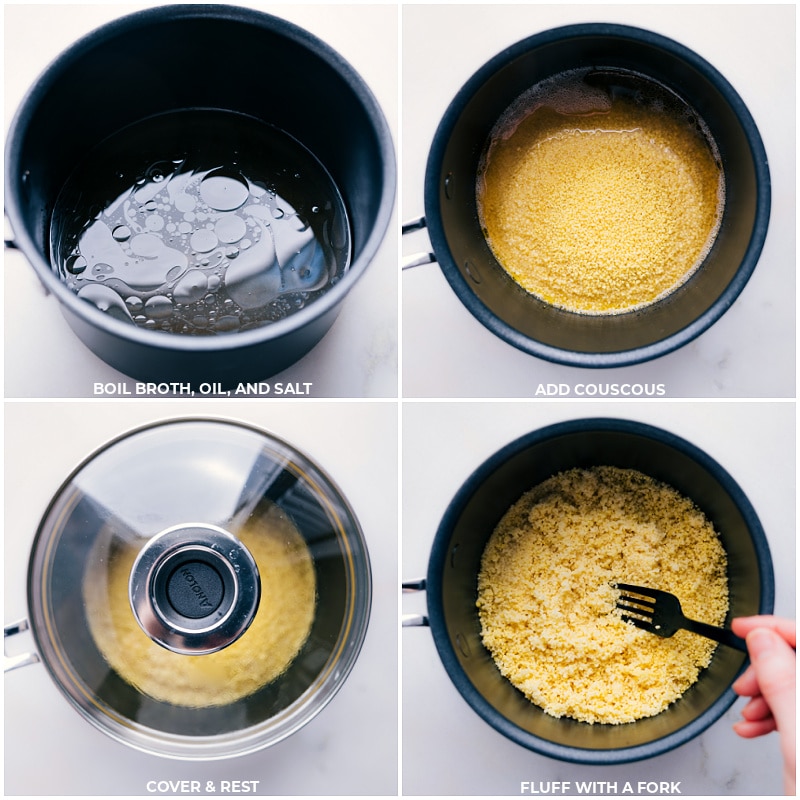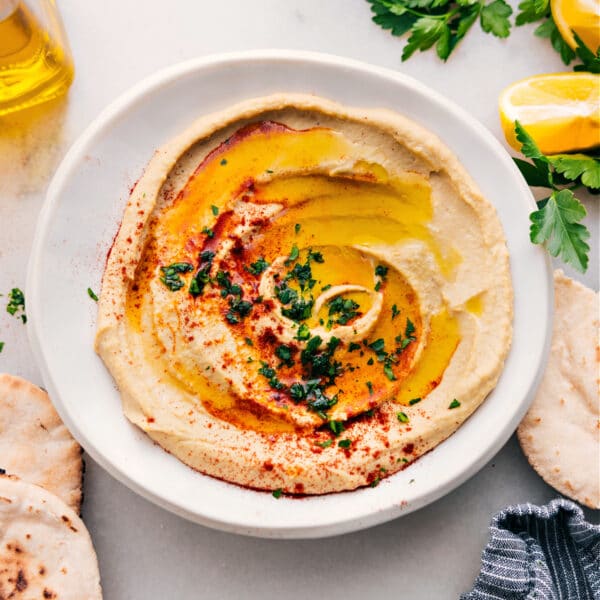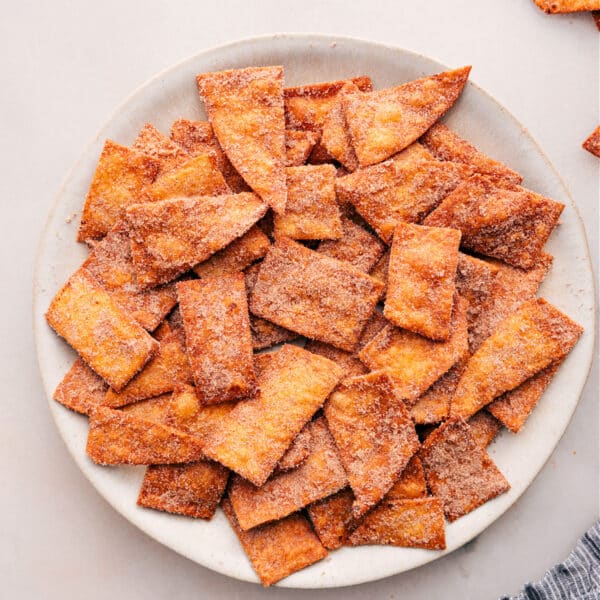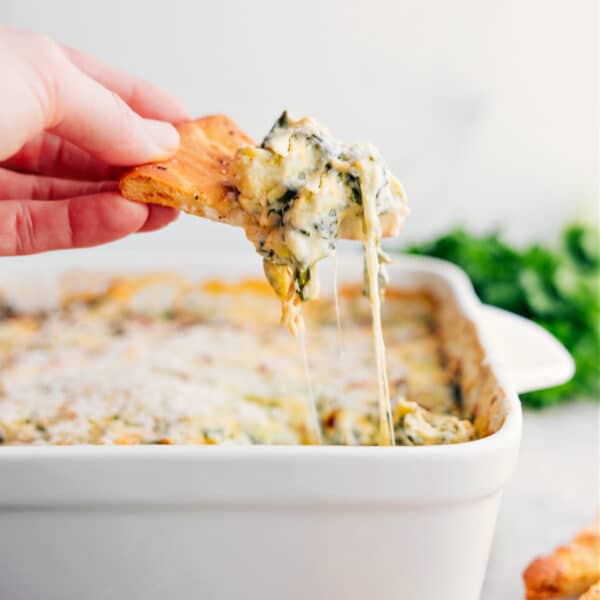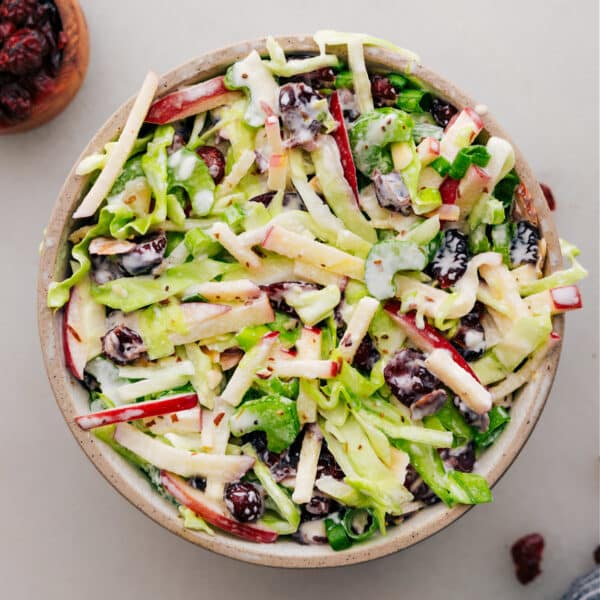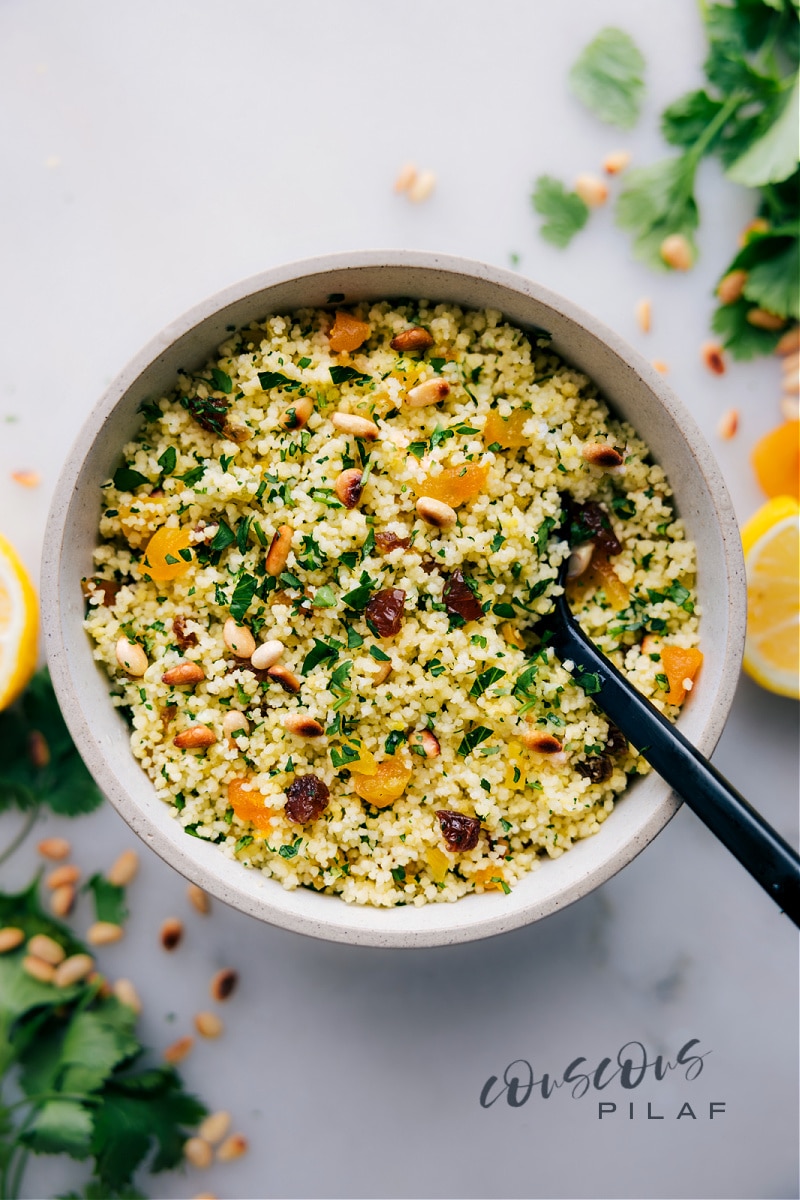
What Is Couscous?
Couscous is a North African dish made of tiny steamed wheat balls (it’s pasta!). A common food in Morocco, Tunisia, and Algeria, it’s also enjoyed around the world.
Often served as a side with stews or grilled meats, it can also be eaten on its own. Flexible and quick to prepare, couscous is low in fat and calories, and a good source of carbs and fiber.
Like bulgur wheat, couscous cooks quickly—just add hot water or soup, cook for a few minutes, and it’s ready to enjoy.
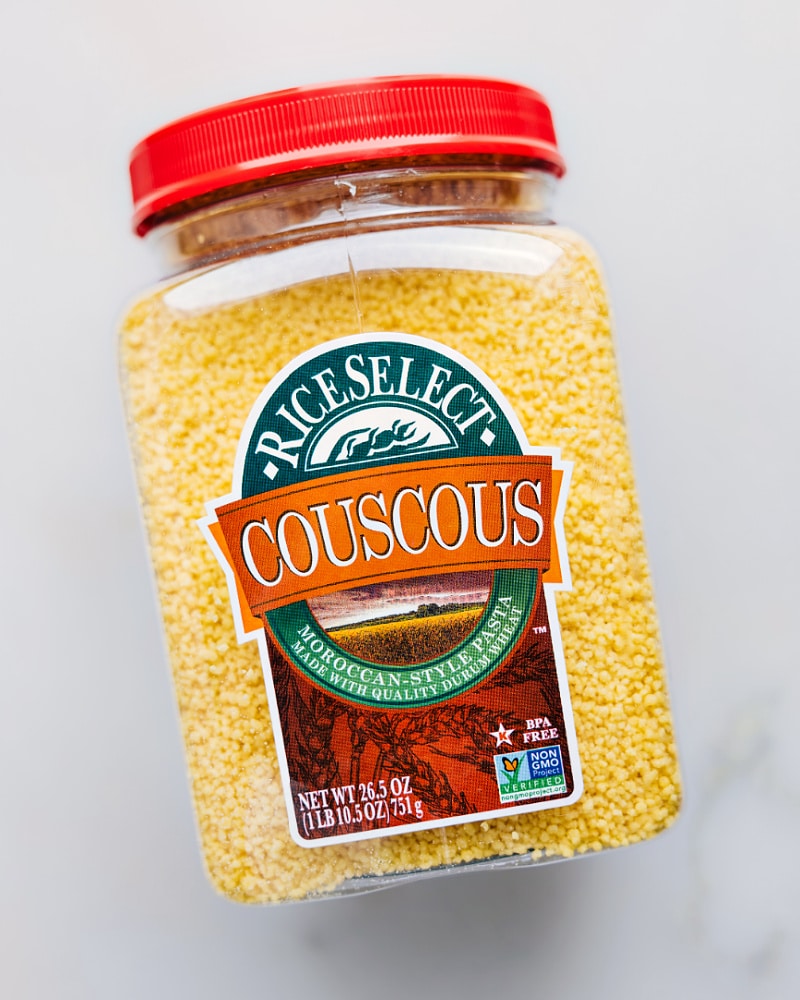
What Couscous To Use
It comes in two main varieties: small-grain and pearl.
Firstly, small-grain couscous, or Moroccan couscous, is fine-textured, quick to cook, and ideal for salads, stews, or as a side dish. This is, in fact, the type featured in this recipe.
On the other hand, pearl couscous, also known as Israeli couscous, is larger, chewier, and takes longer to cook. Made from toasted semolina, it’s best when used in soups or as a base for grain bowls.
Quick Tip
Try Israeli (pearl) in Couscous Soup, Summer Salad, or Italian Salad.
Use Moroccan (small) in Sweet Potato Couscous, Shrimp Couscous, or Couscous Mediterranean Salad.
How To Make Couscous Even Tastier
- Use stock or broth instead of water for a richer flavor.
- Add fresh herbs like cilantro, parsley, or mint for a fresh touch.
- Add dried fruit like apricots, cranberries, or raisins for sweetness and chewiness.
- Mix in toasted nuts like almonds, pine nuts, or pistachios for crunch.
- Use citrus like lemon or orange juice for a tangy, bright flavor.
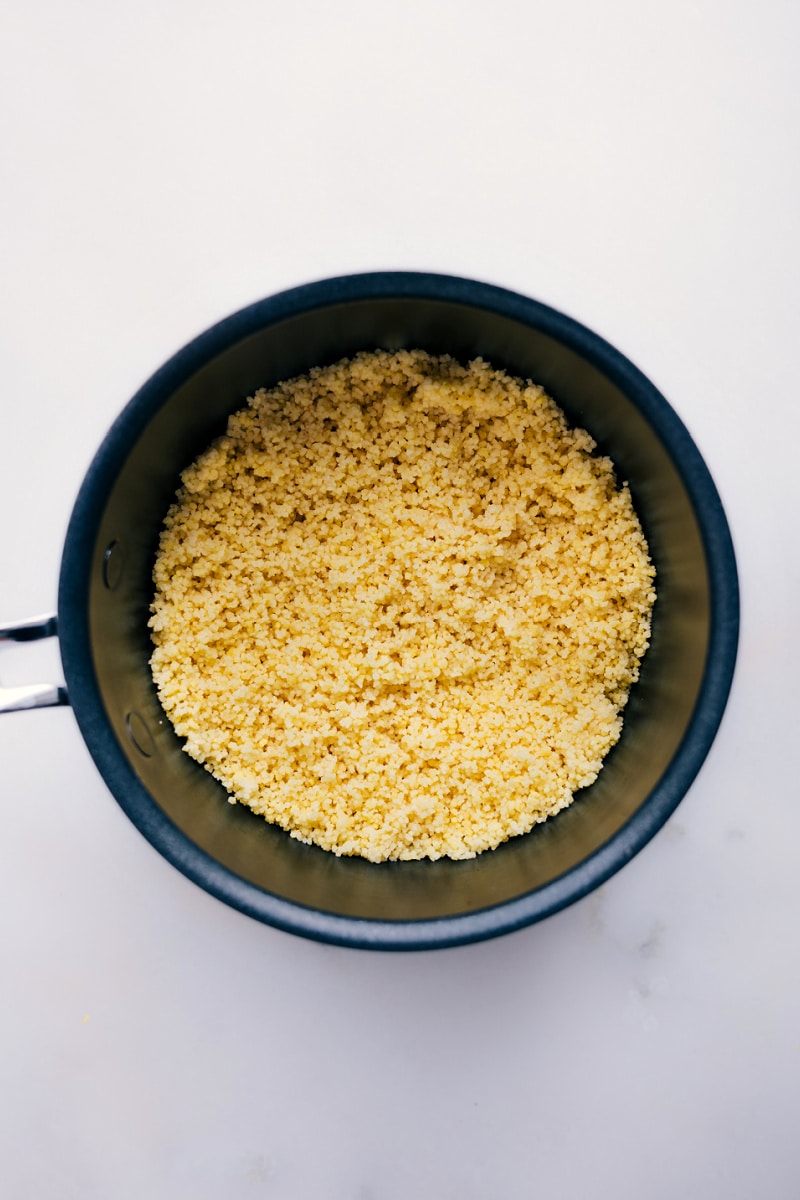
What To Serve With Couscous
- Stews: Often served as a side with long-cooked meat and vegetable stews.
- Grilled meats: Goes well with grilled chicken, lamb, or beef thanks to its light, fluffy texture.
- Roasted vegetables: A perfect foundation for roasted eggplant, zucchini, or sweet potatoes.
- Salads: Use as a base with vegetables, nuts, and dressing for a light lunch or side (try this Kale Salad!).
- Curry: Goes great with flavored curry made with meat, vegetables, and coconut milk.
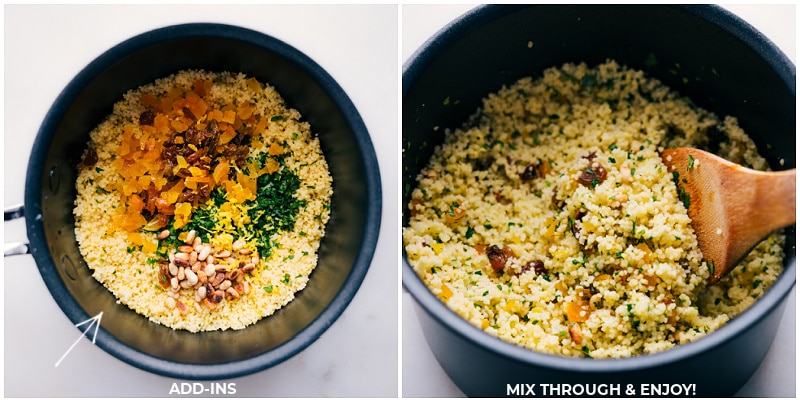
Make This Couscous Your Own
- Add vegetables: Mix in diced vegetables like roasted bell peppers, sautéed zucchini, or steamed broccoli.
- Use different herbs: Try fresh herbs like mint, basil, or dill instead of cilantro or parsley.
- Swap dried fruit: Use chopped dates, figs, or raisins instead of apricots or currants.
- Add protein: Make it more filling by adding cooked chicken, shrimp, or chickpeas.
- Spices: Add spices like cumin, coriander, paprika, or turmeric for extra flavor.
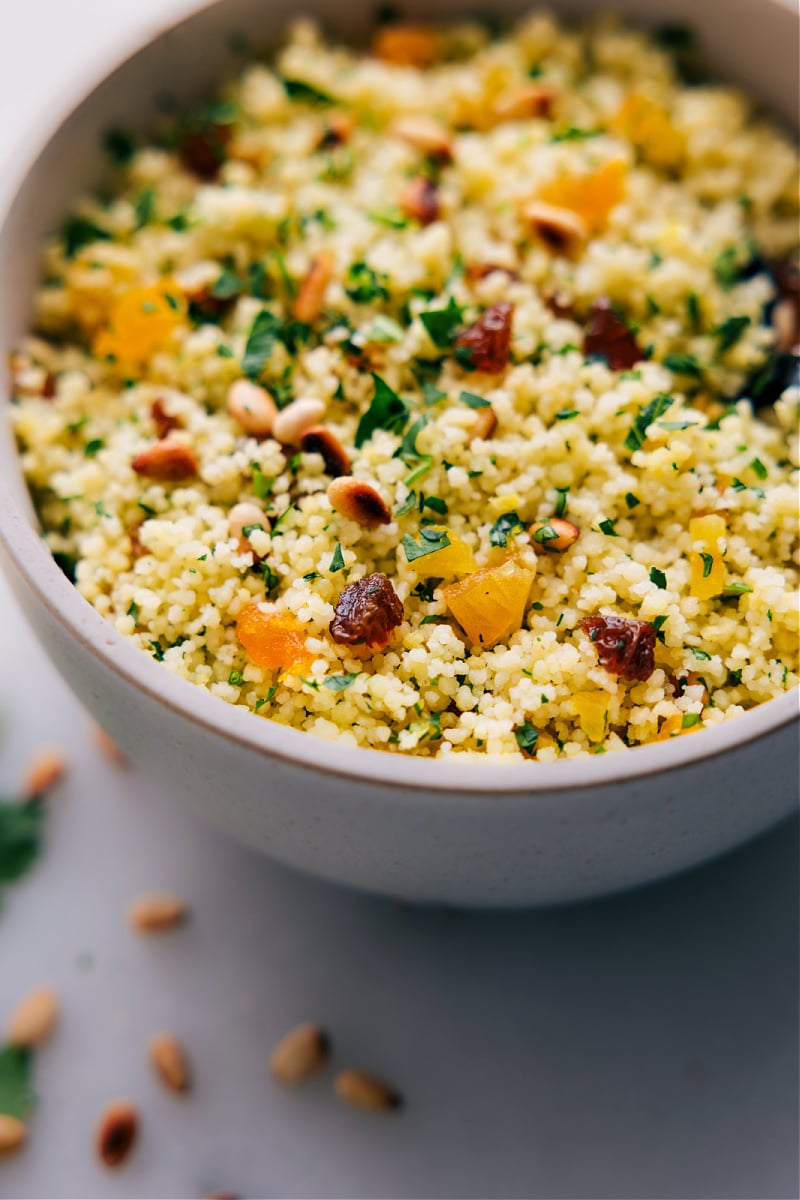
Storage
Once the Couscous has been cooked, it can be stored in the refrigerator for up to 3-4 days. Simply transfer the leftovers to an airtight container and place in the fridge. When ready to eat, reheat it in the microwave or on the stove with a little bit of water or broth to refresh the texture.
More Simple Side Dishes:
- How To Cook Farro baked in the oven!
- Lemon Rice with fresh herbs
- Amazing Curry Rice made in one pan
- Roasted Sweet Potatoes with the best seasoning blend
- Winter Salad with a creamy maple dressing
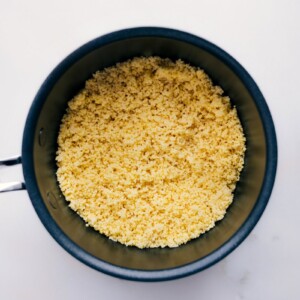
Couscous
Equipment
Ingredients
- 1 cup couscous see note 1
- 1 cup chicken stock or vegetable stock; water will also work
- 2 teaspoons olive oil
- 1/4 teaspoon salt
- 3 tablespoons finely chopped fresh herbs I like a combo of cilantro and flat-leaf parsley
- 1 large lemon
- 1/4 cup diced dried apricots or currants or golden raisins, packed (or a combo of all!)
- 2 tablespoons toasted pine nuts see note 2
Instructions
- In a medium pot, bring the stock/broth, salt, and oil to a boil over high heat. Once it’s boiling, remove from heat and stir in the couscous. Press in an even layer, then cover pot with a tight-fitting lid (or secure plastic wrap on top). Let sit and steam for 5 minutes. After 5 minutes, remove the lid and use a fork to fluff the couscous and break up any clumps.
- Jazz it up (optional): If desired, add all (or some) of the options for jazzed-up couscous. For the lemon, I recommend 1/2 tsp zest and 2 tbsp juice. Gently stir through. Keep warm until ready to use.
Recipe Notes
Nutrition
Nutrition information is automatically calculated, so should only be used as an approximation.
